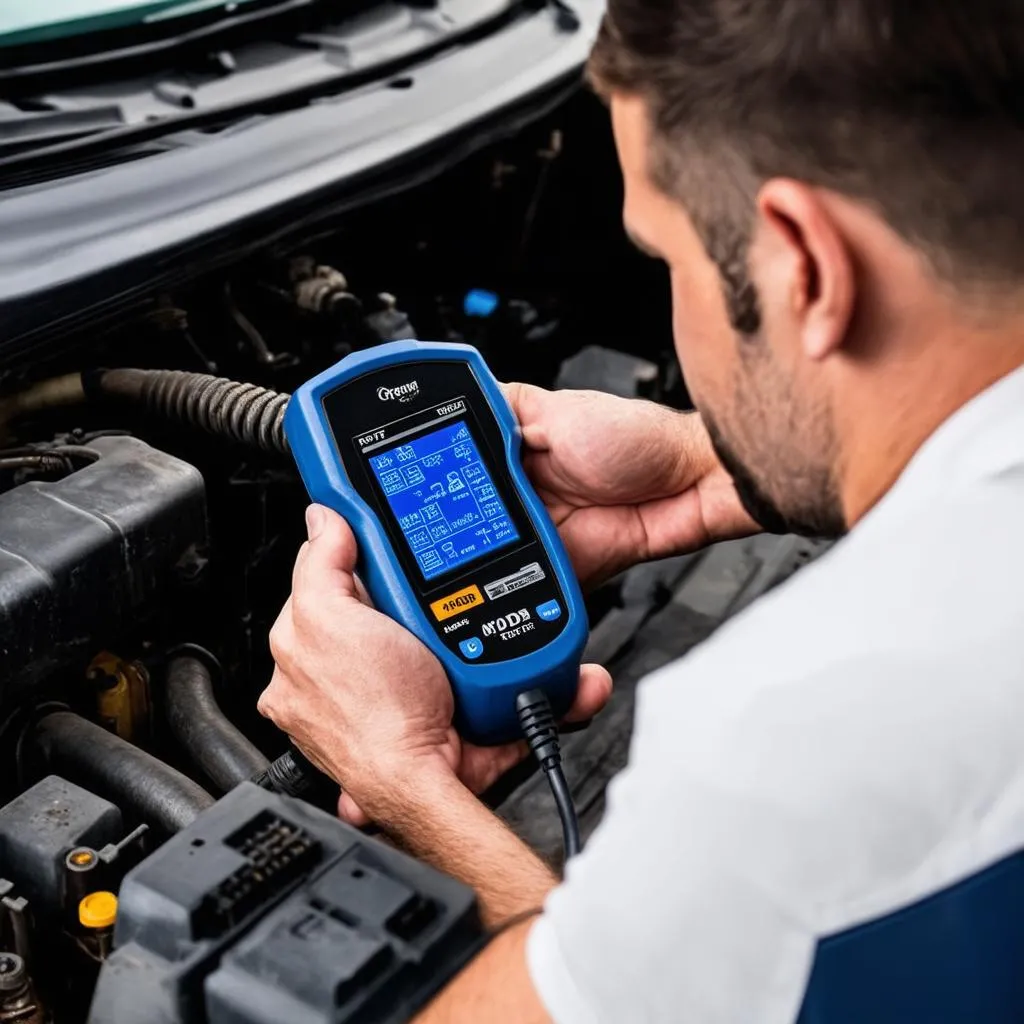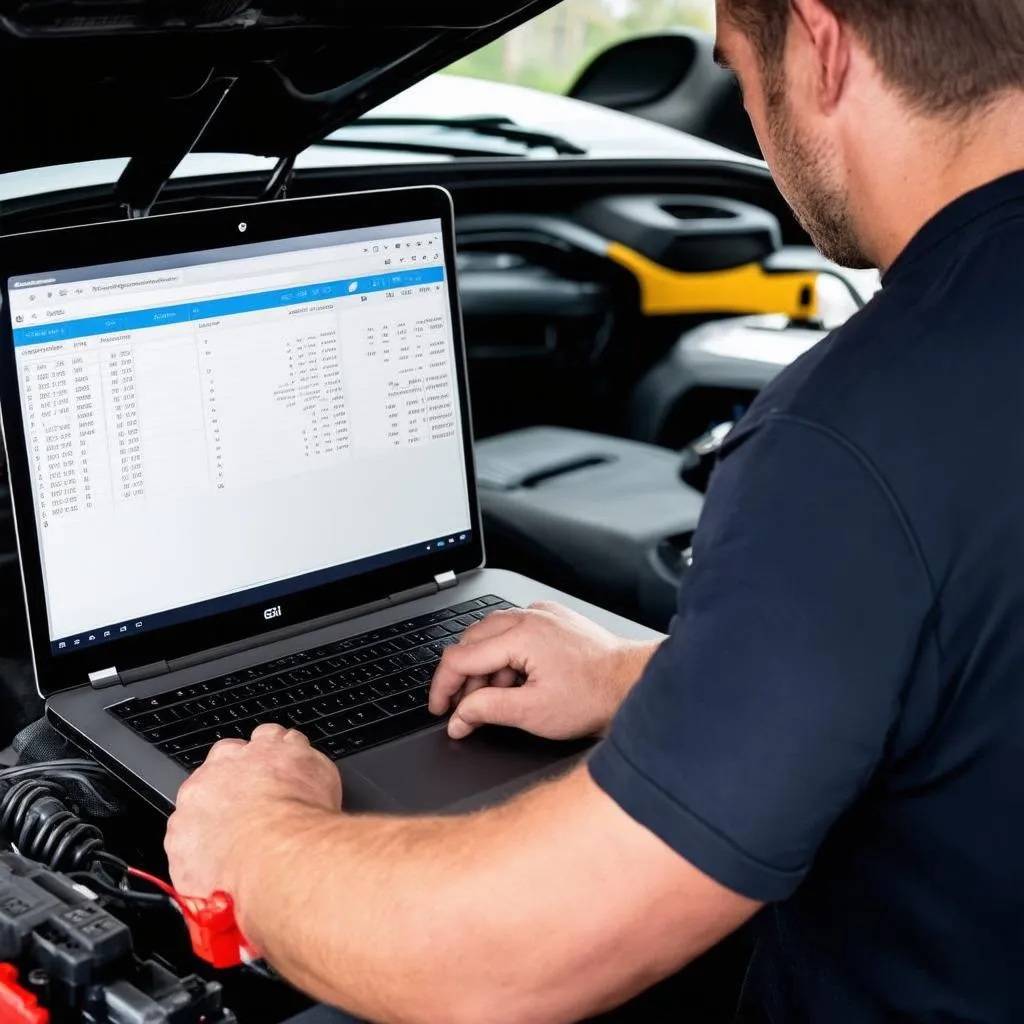Ever felt like your car is speaking a language you just don’t understand? That check engine light pops up, and you’re left wondering, “What now?”. Well, your car is communicating, but through a special code called OBD II, and understanding its 10 modes can empower you with valuable insights into your vehicle’s health.
Imagine this: you’re about to embark on a road trip, but your trusty car suddenly starts sputtering. A quick scan with your OBD II scanner reveals Mode $05 data indicating a problem with your catalytic converter. Armed with this knowledge, you’re able to address the issue before it ruins your trip, potentially saving yourself from a roadside breakdown and costly repairs.
Deciphering the Code: What are the 10 Modes Of Obd Ii Test?
The 10 modes of OBD II are essentially a diagnostic roadmap, allowing mechanics and car enthusiasts alike to pinpoint issues within a vehicle’s engine and emission control systems. Think of them as chapters in a book, each revealing crucial information about your car’s performance.
Mode $01: Current Data (Real-Time Insights)
- What it does: Provides a snapshot of your car’s current operating conditions, like engine RPM, speed, coolant temperature, and more.
- Why it’s important: This mode helps diagnose immediate issues and understand how your engine is performing in real-time.
Mode $02: Freeze Frame Data (Capturing the Moment)
- What it does: Stores a snapshot of the engine’s parameters at the exact moment a fault code was triggered.
- Why it’s important: This mode acts like a black box, helping pinpoint the root cause of a problem by showing what was happening right before the fault occurred.
Mode $03: Stored Diagnostic Trouble Codes (The Error Log)
- What it does: Retrieves stored Diagnostic Trouble Codes (DTCs), which are essentially error codes that illuminate the check engine light.
- Why it’s important: This is the primary mode for identifying what’s triggering that dreaded check engine light.
Mode $04: Clear/Reset Emission-Related Diagnostic Information (Starting Fresh)
- What it does: Clears stored DTCs and freeze frame data.
- Why it’s important: This mode is used after repairs to ensure the issue is resolved and to reset the system for further diagnosis.
Mode $05: Oxygen Sensor Monitoring (Keeping Emissions in Check)
- What it does: Displays the results of the oxygen sensor monitoring tests.
- Why it’s important: Oxygen sensors are vital for maintaining efficient fuel combustion and minimizing harmful emissions. This mode helps ensure these sensors are working correctly.
Mode $06: On-Board Monitoring Test Results for Continuously Monitored Systems (The Deep Dive)
- What it does: Provides results for specific component tests run by the car’s onboard computer, like EVAP system, catalytic converter, and EGR system monitoring.
- Why it’s important: This mode offers a more in-depth look at emissions-related systems, allowing for a comprehensive diagnosis.
Modes $07-$09: Reserved for Future Use (The Future of Diagnostics)
These modes are reserved for future expansion of the OBD II standard, promising even more advanced diagnostic capabilities down the road.
 OBD Scanner Connected to Car
OBD Scanner Connected to Car
Common Questions About the 10 Modes Of Obd Ii Test
Do all OBD II scanners support all 10 modes?
Not necessarily. Basic scanners might only offer Modes $01-$03, while more advanced professional-grade scanners will unlock the full potential of all 10 modes.
Can I use the 10 modes of OBD II to improve my car’s performance?
While primarily used for diagnostics, understanding the data from these modes can help you make informed decisions about maintenance and potential upgrades that could indirectly enhance performance.
Beyond the Codes: The Human Element
While the 10 modes of OBD II provide a wealth of technical information, it’s important to remember that interpreting this data often requires the expertise of a qualified mechanic.
As John Smith, a seasoned automotive engineer at [Fictitious Renowned Automotive Institute], puts it, “OBD II is a powerful tool, but it’s just one piece of the puzzle. A skilled mechanic can use this data along with their knowledge and experience to paint a complete picture of your car’s health.”
 Mechanic Analyzing OBD Data
Mechanic Analyzing OBD Data
Need Help Navigating the World of OBD II?
Feeling overwhelmed? Don’t worry! We’re here to help. At TechCarUSA, we understand the intricacies of vehicle diagnostics. Contact us on Whatsapp at +84767531508 for expert assistance with OBD II scanners and software. Our team of automotive specialists is available 24/7 to answer your questions and guide you towards a smoother, safer driving experience.
Exploring Further
Want to delve deeper into the world of car diagnostics? Check out these related articles:
- Can a Dealership Block OBD Scanner? (http://techcarusa.com/can-a-dealership-block-obd-scanner/)
- Do OBD Performance Chips Really Work? (http://techcarusa.com/do-obd-performance-chips-really-work/)
- 98 Dodge Dakota OBD Coffee P1848 (http://techcarusa.com/98-dodge-dakota-obd-coffee-p1848/)
Remember, knowledge is power. By understanding the 10 Modes Of Obd Ii Testing, you’re taking a proactive step towards becoming a more informed car owner. So next time that check engine light flashes, you’ll be ready to decipher its message and take the right action.